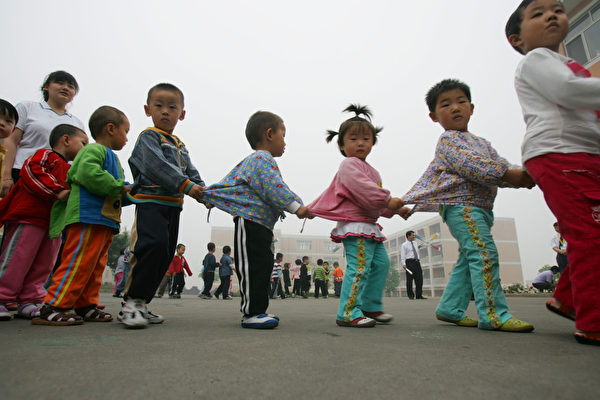In the past decade, China has been experiencing a continuous decrease in the birth rate, which is first impacting kindergartens and then extending to primary, middle, and higher levels of education. This “bottom-up” impact on the education system is manifested through a dual reduction in student enrollment and teaching staff. Particularly noteworthy is the significant decrease in the number of full-time teachers in the preschool education stage, with over 410,000 personnel cut within two years (from 2022 to 2024).
According to a report by First Financial on November 15, data from the “China Statistical Yearbook 2025” revealed that in 2024, the number of full-time elementary school teachers in China decreased by 66,200 compared to the previous year.
Even before the primary school level, kindergartens have been the first to feel the effects of the shifting birth rate. In the preschool education stage, the number of full-time teachers has decreased for two consecutive years, dropping from 3.2442 million in 2022 to 2.8319 million in 2024, resulting in a reduction of 412,300 personnel over two years.
The impact of declining kindergarten enrollments, the number of children in kindergartens, and the decrease in full-time kindergarten teachers has further spread to the primary school stage, causing a “cliff-like drop” in student enrollments. According to data released by the Ministry of Education of the Communist Party of China in the “National Educational Development Statistics Bulletin” in 2024, the total enrollment in primary schools nationwide decreased by 2.6125 million to 16.1663 million.
While the overall reduction is happening, the accelerated urbanization process in Chinese society has exacerbated the spatial imbalance of teaching resources. The population continues to concentrate in towns and especially large and medium-sized cities, leading to the outflow of resources from rural areas.
Statistics indicate that in 29 out of 31 provinces, the number of teachers in rural primary schools decreased from the previous year, with a reduction of 36,000 full-time teachers in urban and town primary schools and a significant decrease of 118,000 in rural primary schools, reflecting the immense challenges facing rural education.
China’s birth rate has been declining since 2017, with a drastic drop starting in 2018, when over two million fewer births were recorded. This decreasing trend continued, with the number of births plummeting to only 9.02 million in 2023. Kindergarten enrollment experienced negative growth for the first time in 2021, leading to a wave of kindergarten closures and, in 2024, a phenomenon of primary schools shutting down.
In May of this year, the National Bureau of Statistics of the Chinese Communist Party released alarming data. In 2024, there was a decrease of 5.09 million children enrolled in kindergartens compared to the previous year, and primary school attendance decreased by 2.516 million. Such a massive year-on-year decline in primary school enrollment has been described as a “cliff-like drop,” with the root cause attributed to the continuous decrease in the birth rate.
With the ongoing decline in the birth rate, the number of primary school students is expected to decrease year after year in the coming years, a trend that seems difficult to reverse.
Moreover, due to the compounding effects of multiple socioeconomic factors such as high housing, education, and medical costs, as well as the emergence of “involution” and “lying flat” culture among the younger generation, the willingness to have children among young people continues to decline.
According to the statistical bulletin released by the Ministry of Education of the Communist Party of China, the number of kindergartens nationwide decreased sharply from 274,400 to 253,300 in 2024, with 21,100 closures within a year, including over 18,000 private kindergartens.
An article in a financial magazine in September of this year reported a reduction of 241,800 kindergarten teachers nationwide in 2024, equivalent to over 600 educators losing their jobs daily. Several experts predict that around 26,000 kindergartens may close in 2025, leading to a potential drop to approximately 163,700 kindergartens nationwide by 2030, with an average of 15,000 closures annually.
The report warns that if the situation is not effectively addressed, a wave of closures may be imminent for primary, middle, and high schools, as well as universities in the future.

